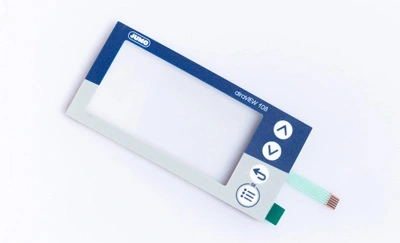
In today's rapidly advancing world of technology, capacitive membrane switches have become an integral part of our daily lives, even if we don't always recognize them. These sleek and efficient components are commonly found in various electronic devices, from microwave ovens and smartphones to medical equipment and industrial control panels. In this article, we will dive deep into the intriguing world of capacitive membrane switches, exploring their inner workings, applications, and advantages.

1. Introduction to Capacitive Membrane Switches
2. Understanding the Basics: What Is Capacitance?
3. The Structure of a Capacitive Membrane Switch
4. How Does a Capacitive Membrane Switch Detect Touch?
5. Key Advantages of Capacitive Membrane Switches
6. Applications Across Industries
7. Maintenance and Care Tips
8. The Future of Capacitive Membrane Switches
9. Frequently Asked Questions (FAQs)
A capacitive membrane switch is a user interface technology that relies on the principles of capacitance. It serves as a versatile and highly responsive input method, allowing users to interact with electronic devices effortlessly. Unlike traditional mechanical switches, capacitive membrane switches have no moving parts, making them more reliable and durable.
To comprehend how a capacitive membrane switch works, we must first understand capacitance. Capacitance is a fundamental electrical property that involves the ability of two conductive materials separated by an insulating layer to store an electric charge. In a capacitive membrane switch, this concept is harnessed to detect touch and trigger specific actions.
A typical capacitive membrane switch consists of multiple layers, including a top membrane layer, spacer layer, and bottom layer. The top membrane layer is often made of a flexible and transparent material, such as polyester or polyethylene. This layer is where the user interacts with the switch, applying gentle pressure to create a change in capacitance.
When a user touches the top membrane layer of a capacitive switch, their finger or a conductive object alters the capacitance between the top and bottom layers. This change in capacitance is detected by the switch's integrated circuitry, which interprets the input and triggers the desired response, such as illuminating an LED or registering a keypress.
1. Durability: Capacitive membrane switches have no mechanical parts, making them highly durable and resistant to wear and tear.
2. Sensitivity: They offer exceptional touch sensitivity, allowing for precise input even with light touches.
3. Customization: These switches are highly customizable in terms of design, size, and functionality.
4. Seamless Integration: Capacitive membrane switches seamlessly integrate into various electronic devices, enhancing their overall aesthetics.
Capacitive membrane switches find applications in a wide range of industries, including:
· Consumer electronics
· Medical devices
· Industrial automation
· Aerospace and aviation
· Automotive
· Telecommunications
To ensure the longevity of capacitive membrane switches, it's essential to keep them clean and free from contaminants. Regularly wiping the surface with a soft, lint-free cloth and avoiding abrasive materials can help maintain their performance.
As technology continues to evolve, capacitive membrane switches are expected to play an even more significant role in our daily lives. Their adaptability, reliability, and user-friendly nature make them a preferred choice for many applications.
In conclusion, capacitive membrane switches have revolutionized the way we interact with electronic devices. Their reliance on capacitance and innovative design make them a dependable and versatile input method. Whether you're using a smartphone or a medical device, chances are you're benefiting from the efficiency of a capacitive membrane switch.
Are capacitive membrane switches only used in touchscreens?
No, they are used in a wide range of devices beyond touchscreens, including keypads and control panels.
Do capacitive membrane switches require a power source to function?
Yes, they rely on electrical signals and require a power source to operate.
Can capacitive membrane switches be customized for specific applications?
Absolutely, they can be tailored to meet the unique requirements of different industries.
Are capacitive membrane switches more expensive than traditional mechanical switches?
While they may have a higher upfront cost, their durability and reliability often result in long-term cost savings.
What is the expected lifespan of a capacitive membrane switch?
The lifespan varies depending on usage but can often exceed one million activations.